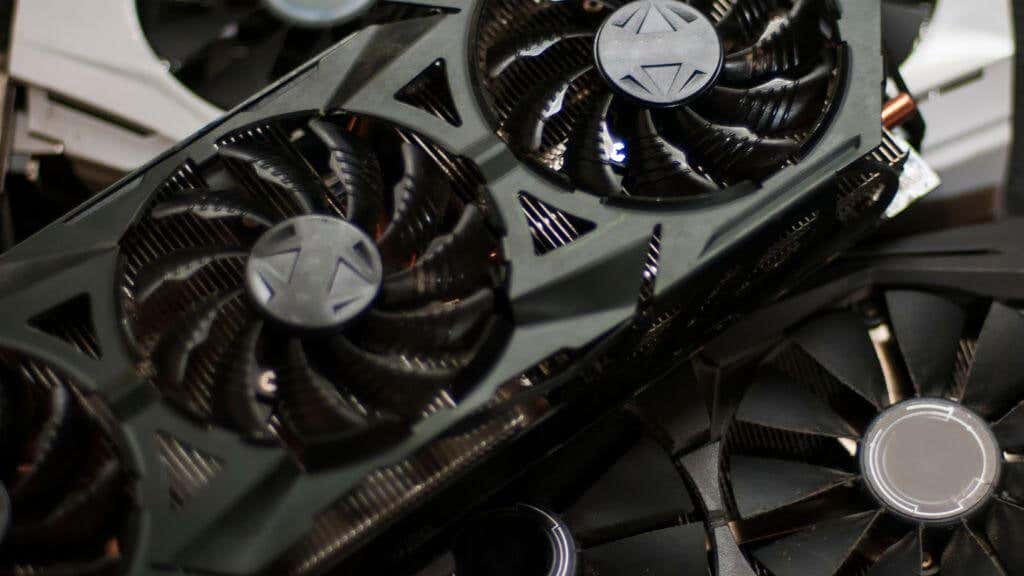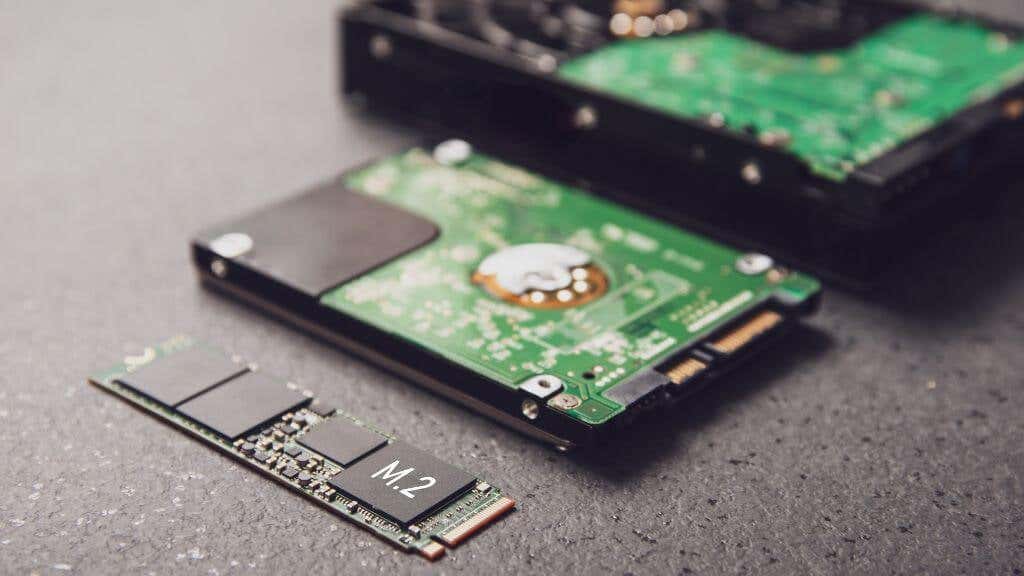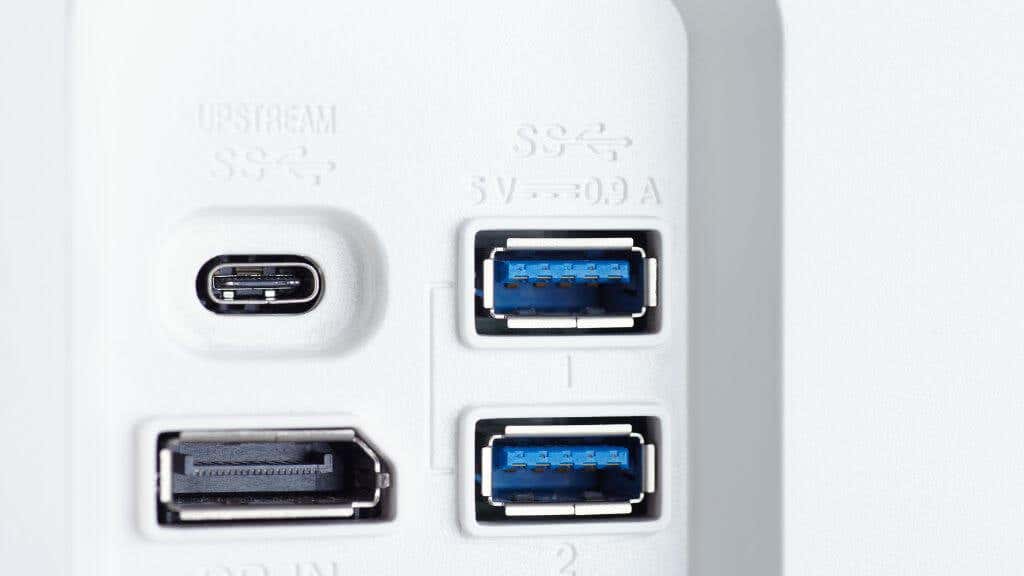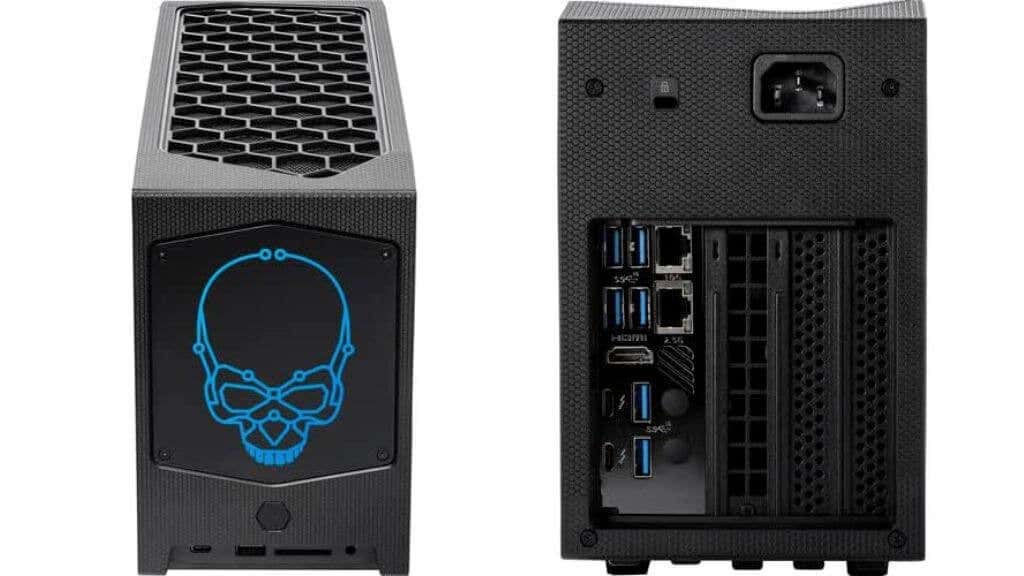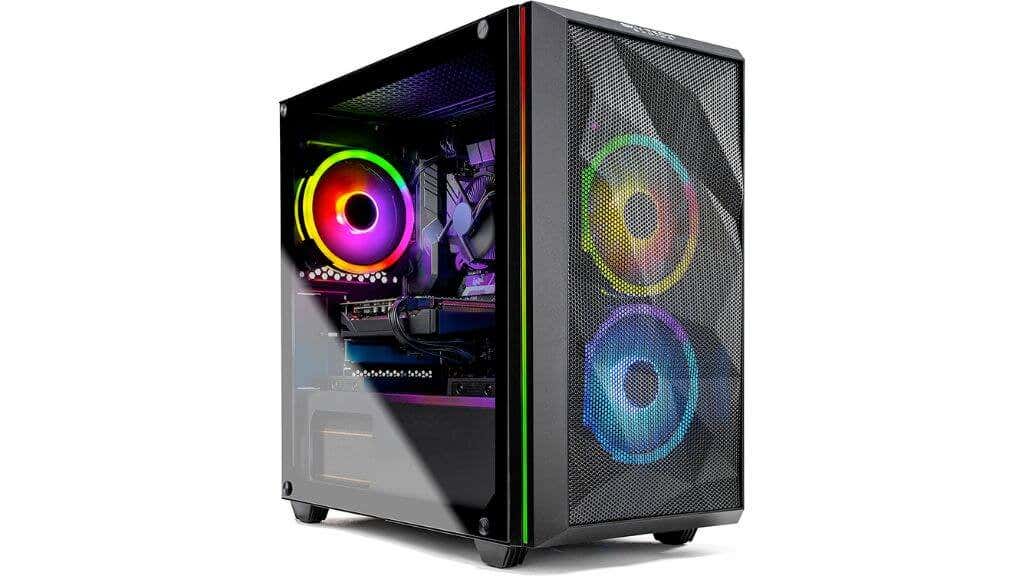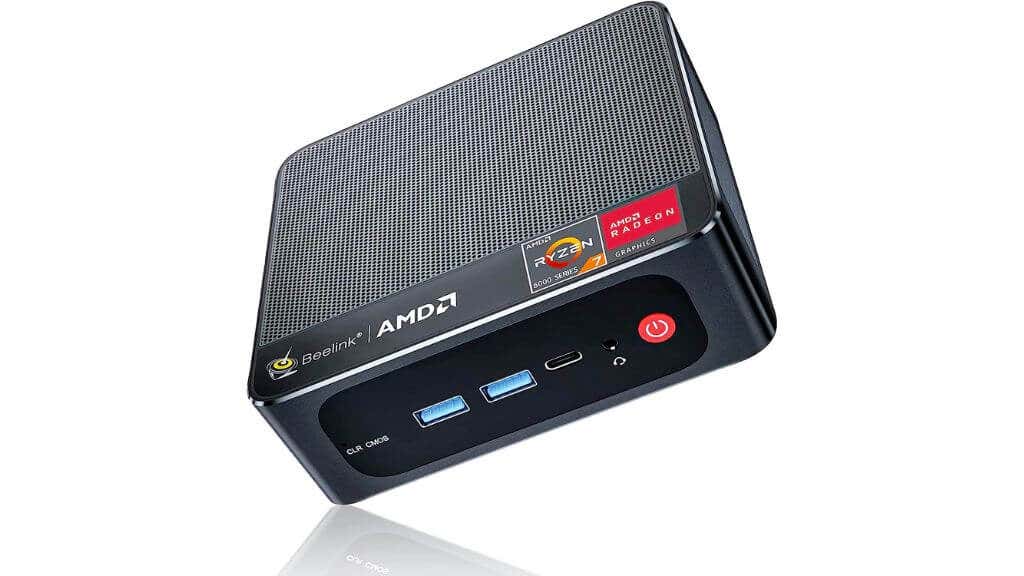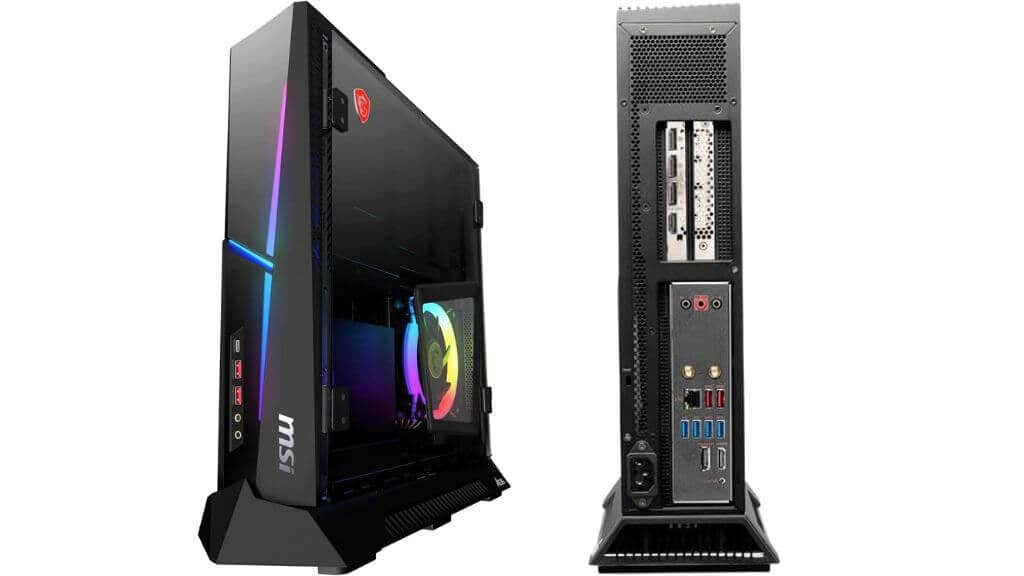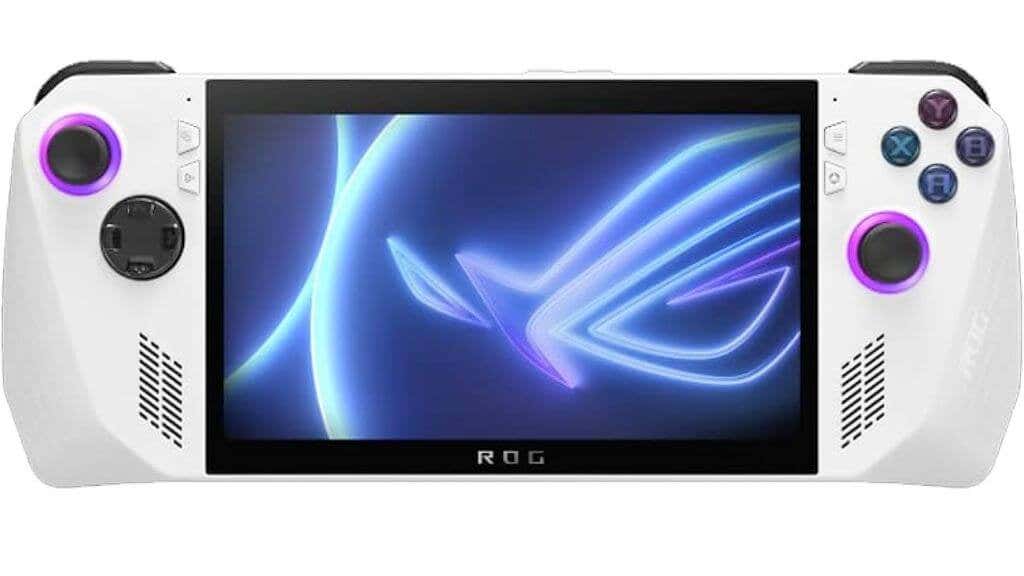Are you tired of those big, hulking gaming desktops but don’t want to invest in a gaming laptop? Then it sounds like a mini gaming PC might be for you!
We’ve compiled a list of five options to get you started on the path of minuscule gaming mayhem, but first, let’s go over what separates an excellent mini PC from those you should avoid.
What to Look For in a Mini PC
Picking the right mini gaming PC isn’t all that different from choosing a full-sized one. Here’s what you should pay attention to if you want the best mini PC.
Performance
Size matters differently than you’d think when it comes to mini PCs. Although miniaturized, these devices are no slouch in the performance department. The heart of your mini PC, the CPU, should be a formidable performer like a recent AMD Ryzen or Intel Core i7 series chip, capable of holding its own with the most challenging tasks.
The GPU is another crucial performer, especially for those with an appetite for gaming or graphically intense work. GPUs like Nvidia’s GeForce RTX or AMD’s Radeon RX series are your ticket to high-quality, stutter-free visual experiences. Integrated GPUs are generally to be avoided, but they have come a long way, and as you’ll see below, some are pretty decent if your gaming requirements are modest.
Memory and Storage
“The more, the merrier” should be your motto when considering RAM and storage for your mini PC. Regarding RAM, DDR4 and DDR5 are the day’s flavors, with 8GB being the minimum for casual users.
However, aim for 16GB or more for gaming to ensure smooth sailing. DDR5 is still relatively expensive at the time of writing, but if you intend to upgrade your mini PC at any point, a newer DDR5 motherboard is the more sensible choice.
SSDs are the clear winner over HDDs for storage, boasting superior speed and reliability. A 256GB or 512GB capacity is a good fit for the average user, but a 1TB SSD or more is a better bet for digital hoarders and hardcore gamers. Physical space inside these PCs is costly, so you should go for a motherboard that offers multiple M.2 slots for storage. That being said, most games will also run well on a SATA III SSD drive, and those have come down significantly in price.
For mass storage, consider an external USB hard drive or 2.5″ mechanical drives for mini PC cases that still support them. Although these drives aren’t suitable for gaming, you can store game backup files to save on download times and other media, such as video and audio on these “spinning rust” drives.
Connectivity
A mini PC with a wide selection of ports can save you a lot of dongle grief in the long run. Use a good mix of USB-C and USB-A ports for versatile connection options. Also, remember to check for Wi-Fi and Bluetooth support to keep you connected wirelessly without hitches.
Buying a motherboard with Wi-Fi and Bluetooth built-in saves you on a few USB ports or internal card slots, which is more important in the mini PC space than with larger desktop machines.
Form Factor and Design
Mini PCs are already space savers by design, but their form factor can still vary substantially. When choosing your mini PC, consider your spatial limitations and aesthetic preferences.
Think about what sort of space you want to use the computer in and the components you want to use. The most critical element, in this case, is the GPU. If you want to use full-size GPUs in your mini PC, it needs to accommodate this, or else you’ll have to make do with thinner cards that don’t offer the same cooling and performance.
Expandability
While mini PCs may lack the full-scale customization of their larger brethren, they offer some expandability. Specific models come as barebones configurations, allowing you to handpick your RAM and storage. Others may even permit future component upgrades.
Note: Some of these mini PCs are from third-party system builders. The OEM may only sell barebones kits or just the chassis, so a third-party PC builder finishes the job and sells the complete PC at a profit. Some mini PCs will not arrive in a sealed box because the third-party seller has changed them.
1. Intel NUC 12 Extreme Mini PC
The Intel 2023 NUC 12 Extreme Mini PC is a titan in a compact form, packing a powerful punch with a 16-Core i9-12900 processor and NVIDIA GeForce RTX 3070 Ti graphics. This combination creates an impressive performance profile capable of easily handling demanding gaming tasks.
This configuration with 64GB DDR4 RAM and a substantial 2TB NVMe SSD provides a responsive system and ample space for games, making it perfect for enthusiasts. Still, you can select more affordable components and reduce the overall price tag.
What stands out about this mini PC is its impeccable connectivity suite. With a combination of Thunderbolt 4, HDMI, and many USB 3.2 ports, you’ll have no shortage of peripherals to connect. Additionally, including Wi-Fi 6E and Bluetooth 5 ensures reliable, high-speed wireless connectivity.
This device is designed with aesthetics in mind. The black casing with integrated RGB lighting creates a sleek, modern look that seamlessly fits into any setup. While it may not be to everyone’s taste, the big skull motif that’s become emblematic of the NUC Extreme range gives the whole little system a badass hacker vibe,
Unfortunately, discounting the lackluster RTX 3060 12GB, there are no decent GPU options above 8GB, which is becoming an issue even for those who play at 1440p.
2. SkyTech Chronos Mini Gaming Computer PC Desktop
The SkyTech Chronos Mini Gaming Computer PC Desktop is an excellent choice for budget-conscious gamers who want a capable system without breaking the bank.
At the heart of the Chronos Mini is an Intel Core-i3 10100F, which, while not precisely top-of-the-line, provides ample processing power for many modern games. Paired with an Nvidia GeForce GTX 1650 graphics card, this mini PC can handle popular games like Fortnite, Valorant, and many more at 1080p with smooth frame rates.
Including a 500GB SSD further contributes to its performance, allowing for quick boot times, responsive gameplay, and decent storage for your games library.
While it might not be built for ultra settings on the most demanding games, the SkyTech Chronos Mini offers impressive performance for its price point. Also, Microsoft Windows 11 Home and Wi-Fi capabilities round off this budget-friendly package.
While it won’t outperform a $500 modern gaming console, you may be surprised at how much it will run well on a machine like this, and you also get the benefits of a PC for other tasks such as work or creative projects.
3. Beelink Mini PC AMD Ryzen
This Beelink Mini PC boasts an 8-core, 16-thread AMD Ryzen 7 5800H processor with up to 4.4GHz boost clock speed. The integrated AMD Radeon Graphics, clocked at 2000MHz, delivers visually solid performance and can support 4K resolution across three screens simultaneously. This is an excellent feature for content creators or multitaskers who need multiple monitors for their work or play.
The system is equipped with 16GB of DDR4 RAM, which can be upgraded to a whopping 64GB, and a 500GB NVMe M.2 SSD, which can also be upgraded to 2TB. This ensures smooth multitasking and quick loading times for applications and games.
Why is this on a list of “gaming” Mini PCs? Well, it’s all a matter of perspective. Any PC can be a “gaming” PC if your expectations are suitably adjusted. The integrated Vega graphics in the Beelink need to be more compelling by today’s standards. Still, it has enough power to play modern games on low to medium settings at resolutions such as 1080p. If you dig a little into the PC gaming backlog, many titles will run splendidly on hardware like this.
So if you mainly do general computer work or watch media on your computer but want to play games in appropriate settings with something in a form factor similar to a Mac Mini, the Beelink is a top choice.
4. MSI MEG Trident X 12VTF-028US
The 2022 MSI MEG Trident X is a top-tier gaming desktop offering a powerhouse of performance inside a stylish and compact chassis. It’s thin and tall, looking like a PC version of the Sony PlayStation 5, but we like this aesthetic. It manages to make a genuinely compact system without sacrificing as much space for components as much as mini PCs do in general.
The 12th Gen Intel Alder Lake Core i7-12700K processor is at the heart of this gaming desktop, offering 12 cores and reaching speeds of up to 5.0GHz. This high-performance CPU can easily handle heavy gaming, video editing, 3D rendering, and other resource-intensive tasks, ensuring a smooth, lag-free experience.
Accompanying the robust processor is a high-end NVIDIA GeForce RTX 3080 Ti graphics card equipped with 12GB of GDDR6X VRAM. The RTX 3080 Ti is one of the most powerful GPUs, delivering superb performance in AAA gaming titles and other graphically intensive tasks. You may be tempted to buy a new 40-series card, but the performance difference isn’t worth the price difference, and the 3080 Ti has 12GB of VRAM, which is the most crucial factor in future-proofing this system.
If you want PC power in a console form factor, the Trident X is likely the closest we’ll get. It’s just a shame about the price tag, but you are getting what you pay for.
5. ASUS ROG Ally
OK, so let’s be clear, the ROG Ally is NOT a mini PC in the same sense as the other computers we’ve picked out here. While those small form-factor computers are still fully upgradeable, customizable, and otherwise complete traditional desktops tucked into a tiny package, the Ally is a whole different form-factor- a handheld PC. Now, hear us out because this is not the crazy suggestion it may seem.
If you want the most compact PC gaming setup possible, then the Ally is a legitimate option. It has plenty of gaming grunts on the go, and when you dock it with a screen and other peripherals, it turns into a mini desktop gaming PC.
Best of all, you can use it with ASUS’ proprietary external GPU options that don’t have the performance constraints of Thunderbolt, giving you access to some truly high-end GPU power if you’re willing to pay for the privilege.
While the lack of upgradability is undoubtedly an issue, consider that something like the Beelink we reviewed above is nearly as limited in the upgrade arena, and the Ally will beat it in most scenarios.



